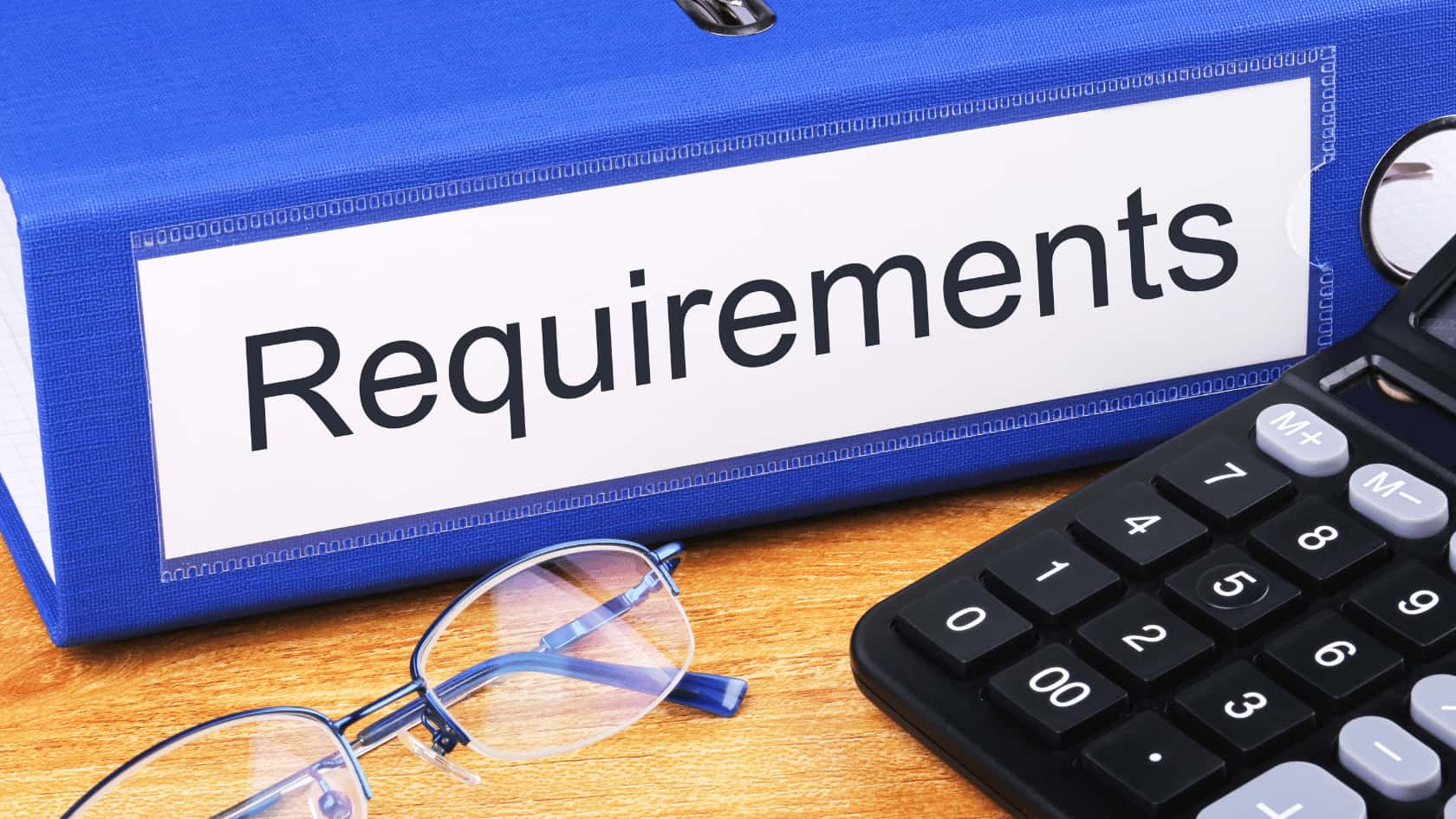If you sell a lot on Amazon, you'll need an Amazon Certificate of Insurance. It's a rule from Amazon to make sure everyone's safe if there's an accident with your products. You can add your insurance easily on Amazon Seller Central, and it's important that your insurance paper has the same name as your Amazon account.
Make sure your insurance is signed and stays valid for at least a couple of months after you give it to Amazon. Keep it updated so you can keep selling without any breaks. Amazon has made it pretty simple to upload and manage your insurance online, giving customers more trust in buying from you.
Keeping your insurance details right is part of being a good seller on Amazon. Want to make sure you're covered? Keep reading to find out how you can handle your Amazon Certificate of Insurance with no hassle.
Do I Need Insurance To Sell on Amazon?
Yes, as an Amazon seller, you must have an insurance policy.
Specifically, when your gross sales exceed $10,000 per month over a period of three consecutive months, Amazon's policy necessitates that you acquire commercial general liability insurance.
This requirement is in place to protect both you, the seller, and Amazon from potential liabilities that arise from the products sold.
The general liability insurance must include, at a minimum, $1 million in coverage both per occurrence and in aggregate. Here's what you need to ensure this policy covers:
-
Products liability: Coverage for any damage or injury caused by products you sell.
-
Bodily injury: Protection in case someone is harmed by your product.
-
Broad form property damage: Coverage for property damage claims.
Additionally, your policy should include:
-
Products/completed operations: For claims related to the functioning of your product after it's been sold.
-
Personal injury: Covering claims for issues like defamation or slander.
-
Broad form contractual coverage: Extending coverage to various contractual liabilities.
Upon obtaining such a policy, you must then provide proof to Amazon in the form of a Certificate of Insurance. Your insurance provider will issue this certificate. It is a document that summarizes the key aspects and conditions of your insurance policy.
Remember to list Amazon as an 'additional insured' on your policy. This formal addition ensures that Amazon is also protected under your policy where applicable. The exact wording for this addition can be found in Amazon's insurance requirements, and it is crucial to follow it precisely to avoid any compliance issues.
Amazon's Insurance Requirements
When selling on Amazon, complying with their insurance requirements is crucial to ensure that your business operations run smoothly. Proper liability coverage protects both you and your customers.
Policy Requirements for Amazon Sellers
As an Amazon seller, you are obligated to maintain commercial general liability insurance, umbrella insurance, and excess liability insurance. These policies should perfectly align with your listed legal entity name on Amazon. Below are specifics regarding the policy:
-
Minimum Coverage: Your policy must offer a minimum of $1 million per occurrence which is the maximum payout for claims from a single incident.
-
Aggregate Minimum: An aggregate minimum of $1 million is also required, referring to the total payout within the policy period.
-
Inclusions: The coverage should include product liability, personal injury, and advertising injury.
-
Additional Insured: Amazon must be added as an additional insured if your gross proceeds exceed $10,000 within any month on the Amazon platform.
Amazon's insurance requirements apply as soon as you meet or exceed the specified sales threshold and thereafter.
Amazon Services Business Solutions Agreement
The Amazon Services Business Solutions Agreement outlines the contractual obligations between Amazon and its sellers, which includes maintaining valid insurance.
Proof of Coverage: You must provide evidence of coverage when requested by Amazon.
Address for Submission: Send your Amazon Certificate of Insurance to the following:
Amazon
P.O. Box 81226
Seattle, WA 98108-1226
Attention: Risk Management
Verification: Amazon may ask for real-time verification, akin to a Certificate of Insurance (COI) for different types of insurance like liability, property, cargo, etc.
Fulfilling these needs is part of your agreement with Amazon, and adhering to them is paramount to continue selling on their platform.
Setting Up Your Insurance Policy
When preparing to sell on Amazon, securing the right business insurance policy is a crucial step. It's essential to choose an insurer that meets Amazon's requirements, and to understand the policy limits and coverages to ensure adequate protection.
Choosing an Insurance Provider
Identify insurers offering commercial liability insurance that align with your business needs. Consider the following:
-
The insurer's reputation and financial stability.
-
Specific experience in e-commerce and coverage for online sellers.
-
Responsiveness to claims and customer service quality.
Once you've selected an insurer, verify that they can list Amazon as an additional insured on your policy, which is a typical requirement for Amazon sellers.
Understanding Policy Limits and Coverages
Your insurance policy should meet the following Amazon requirements:
|
Coverage Type |
Minimum Requirement |
|
General Liability |
$1 million per occurrence |
|
Umbrella/Excess |
$1 million |
|
Product Liability |
Included in General Liability |
Be aware of the following:
-
Policy limits indicate the maximum amount the insurer will pay per claim or incident.
-
Coverage should include products/completed operations, bodily injury, and property damage.
-
Review your policy's specifics, such as premiums, deductibles, and exclusions.
Selecting the right coverage ensures you meet Amazon's prerequisites and provides peace of mind as you manage your online business.
Additional Insureds and Coverage Details
When selling on Amazon, it's critical to understand the specifics of including Amazon as an additional insured on your liability insurance policy and recognize the nuances between primary and excess liability coverage.
Adding Amazon as an Additional Insured
To meet Amazon's insurance requirements, you must list Amazon as an additional insured on your certificate of insurance (COI).
Specifically, the wording should cite "Amazon.com Services LLC and its affiliates and assignees" as the additional insureds. Here is a quick checklist for this process:
-
Name on COI: Amazon.com Services LLC, its affiliates and assignees
-
Address for Amazon: P.O. Box 81226, Seattle, WA 98108-1226
-
Policy Aggregate Limit: Make sure the coverage meets or exceeds Amazon's minimum requirements.
-
Proof of Coverage: Be prepared to submit this documentation to Amazon if requested.
Your liability insurance policy should clearly indicate any deductibles as well as the extent of coverage, including property and persons covered.
Differences Between Primary and Excess Liability
Understanding the difference between primary and excess liability insurance is paramount in navigating your responsibility as an Amazon seller:
-
Primary Liability Insurance: This is the main insurance that responds to claims first. It offers coverage for bodily injury, property damage, and other liabilities up to its limits before any other policy kicks in.
-
Excess Liability Insurance: Functions as a secondary layer of protection that provides additional coverage once your primary insurance limit has been reached.
Ensure that your insurance coverage aligns with Amazon's requirements by verifying:
-
Your primary policy limit is sufficient to cover claims without immediately relying on excess liability.
-
The excess liability policy details are stated clearly, should additional coverage be needed for a claim.
Submitting Proof of Insurance to Amazon
Ensuring you have uploaded the correct Certificate of Insurance (COI) to Amazon Seller Central is critical for maintaining your seller privileges. Here’s how to navigate the process efficiently.
How to Upload Your COI to Seller Central
-
Log in to your Amazon Seller Central account.
-
Go to the Account Info section of the dashboard.
-
Select Business Insurance to access the insurance settings.
-
Click on Choose File under Upload Certificate of Insurance.
-
Select your COI file and upload it by clicking on the appropriate button.
-
Ensure that all required fields are completed accurately before submission.
Review and Approval Process
After uploading your COI:
-
Amazon will review the file to ensure it meets all requirements.
-
You might need to confirm that the uploaded COI complies with Amazon’s terms by ticking a checkbox.
-
Submission does not guarantee immediate approval, as Amazon must validate the details.
-
You will receive a notification upon acceptance or if further action is needed.
Conclusion
Getting the right Amazon Certificate of Insurance is essential for any seller. It not only protects your business but also shows customers you're trustworthy. Keep your insurance current to make sure your sales on Amazon go smoothly and follow Amazon's rules. This way, you'll keep your business safe and ready for growth.
With your insurance sorted, you can sell on Amazon with peace of mind. Your insurance certificate is like a shield for your store, keeping you safe from problems and making sure you stay on the right side of Amazon's policies. Stick to these important steps, and you'll be well-prepared for a successful selling experience on Amazon.
Don't let your business get lost among others. Be in control of your success on Amazon by using these tested SEO (search engine optimization) methods and keep learning more. If you want to do well with paid advertising, check out what Scale Insights' PPC (pay-per-click) software can do. It has special tools to help you handle and improve your ads, making it a great way to get the most out of your money.
Frequently Asked Questions
How much does Amazon charge for insurance?
Amazon does not charge sellers for insurance; instead, sellers are responsible for obtaining their own commercial general liability insurance from a third-party provider. The cost of this insurance varies depending on the provider, your business size, product categories, and other risk factors. Sellers need to research and purchase insurance that meets Amazon’s requirements independently.
When can I use Amazon insurance?
Amazon does not provide insurance for sellers. As a seller, you use your own third-party commercial general liability insurance when a claim is made against your products or operations. This insurance is used in instances of property damage or bodily injury claims related to the products you sell on Amazon.
Is Amazon self-insured?
Amazon is self-insured for its own business operations to a large extent, which allows it to handle risks internally. However, third-party sellers on Amazon are required to obtain their own insurance policies. Through these policies, sellers protect themselves and their businesses from claims, and these requirements are set by Amazon to maintain a safe selling environment on their platform.
How long does it take to get insurance from Amazon?
As Amazon does not issue insurance policies to sellers, the timeframe for obtaining insurance will depend on the third-party insurance provider you choose. The process can be as quick as a few days or may take a few weeks. It's important to start the process early to ensure that you have the required coverage in place to meet Amazon’s seller requirements.
What does Amazon product insurance cover?
Amazon requires sellers to carry commercial general liability insurance, which typically covers product liability, bodily injury, and property damage claims. This means if a product sold by a seller causes harm or damage, the insurance can help cover legal fees and damages awarded. It is vital to confirm with the insurance provider that the policy includes the necessary coverage to comply with Amazon’s requirements.



 Scale Insights Team
Scale Insights Team



